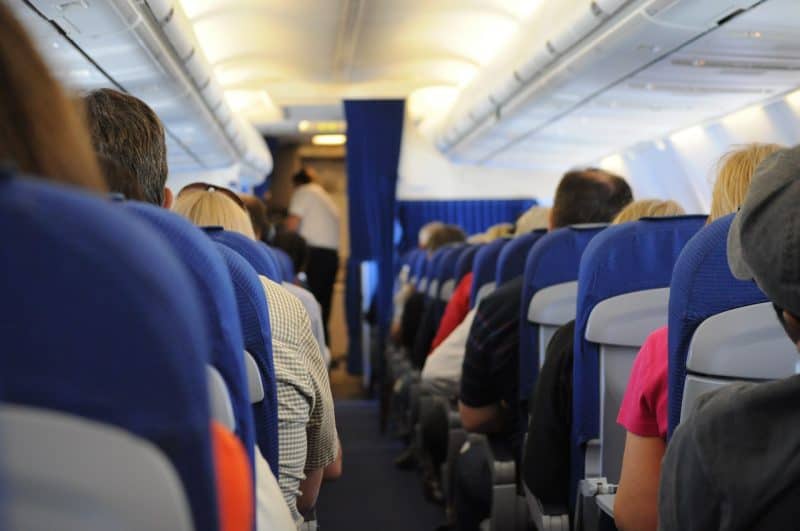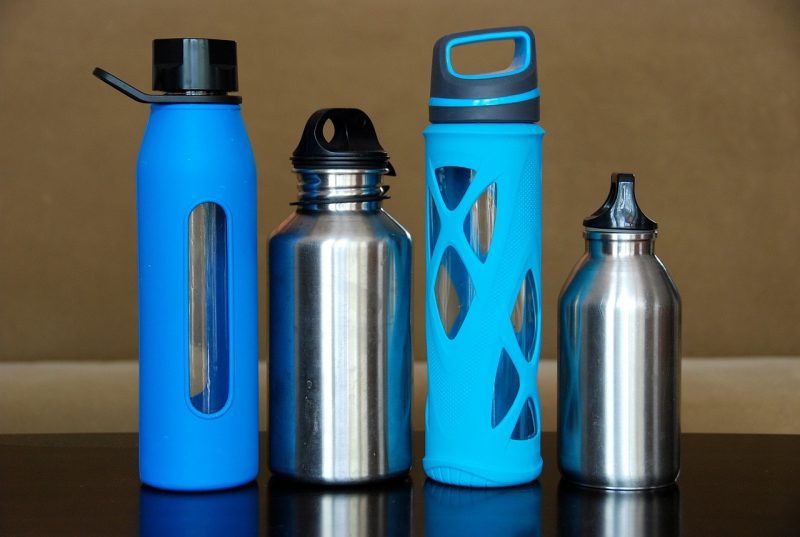No denying that travel can be stressful. And with that stress, travelers almost literally come across germs and viruses at every corner and each of their assigned seats. Traveling in close proximity to others at an airport or other public places increases your chances of getting sick. Yet with these 6 tips to stay healthy when traveling you can avoid becoming ill and enjoy your travels.

This post may contain affiliate links. If you click through and buy, TravelingInHeels will get a small commission. Thank you for your support!
6 Simple Tips to Stay Healthy When Traveling
Table of Contents
From flight delays to long security lines in airports, sometimes traveling really does feel like “a journey of a thousand miles begins with one step.” Unfortunately, many of those steps occur at the airport before even arriving at the destination.
But don’t use up your energy and good mojo by not taking care of yourself when traveling for business or pleasure. Read on for these manageable tips to stay healthy when traveling.
1. Stay hydrated.

Water is your friend so you can stay healthy while traveling. Seriously. The pressurized airplane cabin tends to dry the eyes and nasal passages. Increasing your water intake helps keep those germs away.
Drinking plenty of water also increases your general health, but especially when traveling those benefits include increased energy, relieves fatigue, flushes out toxins, boosts immune systems, and prevents cramps and sprains.
As we all know when we are traveling, we go-go-go, so our energy level decreases and those bugs tend to jump on us.
Some of the common health problems affecting airplane passengers are often linked to the lack of humidity in the cabin air. This can lead to dehydration from air travel. While humidity levels in the typical home or office room are usually at a comfortable 30 – 65 percent, the air inside of a cabin is much drier, often at 10 percent.
Did you know that is the typical level of an arid desert like the Sahara! No wonder it’s easy to end up travel dehydrated.
Much like the desert, high altitudes are also dry locations that can dehydrate you quickly. Fortunately, Denver altitude sickness IV can rehydrate you and improve your symptoms so you can get back to enjoying your vacation.
TIP: In order to stay hydrated and encourage yourself to drink more water, bring a water bottle and fill it at a water fountain once you pass through security. Or purchase a bottled water from a vendor in the secured area.
2. Bring your own blanket and pillow.

Some airlines still provide a blanket and pillow. And yes, it’s usually encased in a plastic bag. But when airlines don’t provide these amenities, carrying your own personal small, foldable blanket and neck pillow reduces the exposure to germs. And your own blankie and pillow, priceless.
TIP: Instead of a blanket, I bring a large pashmina scarf, as it’ll double as a fashion accessory when I land.
3. Yes to carry-ons means less legroom.
Absolutely you should carry on when possible, especially on those long flights with connections as your checked bags may get lost in the airport baggage shuffle nightmares. Tucking even a small bag in the seat in front of you means less legroom for hours (upon hours) in your already cramped quarters. Unfortunately, compartments to stow your bags seem to be taken in an instant by other passengers.
Carefully consider the size of your carry-on bag and/or handbag to optimize your small space on the airplane.
4. Bring healthy snacks.
If you’re in the back of the plane, the time it takes for the flight attendants to get to you may not coincide with your hunger (or thirst). Bring healthy snacks. Easy to pack and items include dried or firm fresh fruit (like apple so as not to be squished); nuts, pretzels, bars (protein, granola, fruit or nut); popcorn; crackers, jerky, trail mix, and other portable food items.
This is a great post on how to pack healthy food for air travel, considering TSA rules and regs on what food you can bring.
5. Move around to avoid blood clots, leg cramps — and to stretch.

It’s not fun unbuckling that seat belt and moving around a full airplane, but it is important. The risk for formation of blood clots increases on long-haul flights, so get up as often as you can. I tend to get leg cramps, so not only should you stay hydrated (see above), but walk around the cabin to stretch those leg muscles. (And make your FitBit happy!)
TIP: When seated, tap your toes, raise your feet, do calf-raises — anything to improve blood circulation. Pace the aisles of the cabin. Do remember to be courteous, but don’t feel bad — moving around is important for your health.
6. Sleep when you’re tired and arrive rested.
Raise your hand if you arrived at the airport exhausted from prepping for the flight. Or simply getting caught up with work or life before departing for your business trip or vacation. Yeah, me too!
Do your best to arrive rested. Consider the time zone of your destination, and try to adjust as much as possible in the days preceding your departure. Even if it’s going to bed an hour or two earlier, in anticipating of an 8-hour time change, it will help upon arrival.
We’ve got more! 5 Essential Tips for Staying Safe on Holiday and 6 Tips for Holiday Travel.

